PYGMALION'S CREATION

Often enough, stories in the telling, change shape, luminous allegories of bygone times lose their content midst the shadows, myths and epics that are presumed fictions for gentler minds - in reality they are guardians of revealed truths and wisdoms.
Change is inherent in all, the faculty of understanding is no exception to the rule. Knowledge unperceived, when subjected to the sifting process of intuition, reveals the inner nature of narrative with the passing of time.
Pygmalion's love story is ever changing, he was King of Cyprus and, by royal decreee, Priest of Aphrodite-Astarte's cult. He was also an artist, sculptor and poet of renown, who for long dreamed of finding the most beautiful woman in his kingdom to be queen. However, his search for that impossible she was in vain. Pygmalion's sleeping and waking hours were filled with visions of his illusive yearned for queen, till one day he decided to spend the lonesome years in his studio in a determined attempt to carve the object of his visions from a block of marble. He laboured long and often, sequestered with his self-appointed task; when his idealised dream was accomplished he sat before the silent statue enraptured and beguiled, before long he was imprisoned by a consuming passionate love.
Tormented and thwarted by the inanimate ideal of the most beautiful woman, the king made a vow which was to change his life. He locked himself in the temple and there prostrated before the altar of Aphrodite he beseeched her nine days for the granting of a boon. Aphrodite well knew the nature of the king's desire, long before the mantle of priestly kingship draped his newly born days, the immortals tended the planting of his desire. And so King Pygmalion during his prayerful vigil increasingly entreated the diety to bestow life on the object of his love. Daily his bequest grew bolder, till finally on the ninth day he pleaded with Aphrodite to indwell his statue with her own life and love and, as the story goes, the boon was granted and the statue came to life.
The king's palace in the Royal city of Paphos faced directly on to Aphrodite's fabled temple, which was on a promontory a little way off the sea-coast, said by Homer to have risen magically out of the sea. Now it was a proudly held belief among Pygmalion's subjects that since he was both king and priest whose temple devotions were a byword, the beautiful woman he crowned and wedded was indeed no other than their own beloved godess. Little did they know she was formed by the king's own hands - like her temple, she too had risen out of the sea.
Aphrodite's new role was long ago foretold and inscribed in the Scrolls of Olympia,
Zeus' daughter was ever patron diety of Cyprus, now she was Queen. Her chosen
name was Galatea - to be called by the Romans in later times, Venus - her descendant
priestesses wheresoever they may be are unsung nymphs of femininity, who like their
radiant Olympian possess the philtre of love.
- DANIEL
As a plastic surgeon I can identify with Pygmalion's passion in creating his vision of
idyllic beauty. However too often beauty is only skin-deep and our visions and strivings
must penetrate where beauty truly resides, I.E., in the spirit of man which can not be formed
by the sculptors hand.
- LJO
HOME |
LEWIS J. OBI MD, FSRA |
SERENDIPITOUS JOURNEY |
CONTACT
ABOUT DANIEL |
DANIEL GALLERY |
CATALOG RAISONNE |
DANIEL LITHOGRAPHS
The Daniel Gallery | Copyright © 2012 ObiArts, Inc. | All rights reserved
Web Site Design, Web Hosting & Search Engine Optimization by BoomClient
![]()








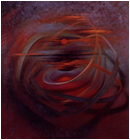













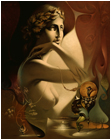



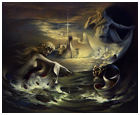
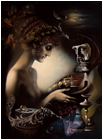



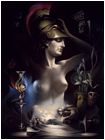
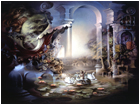
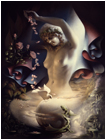

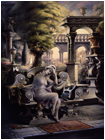


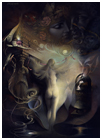

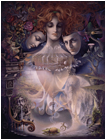

 VISIT US ON FACEBOOK
VISIT US ON FACEBOOK